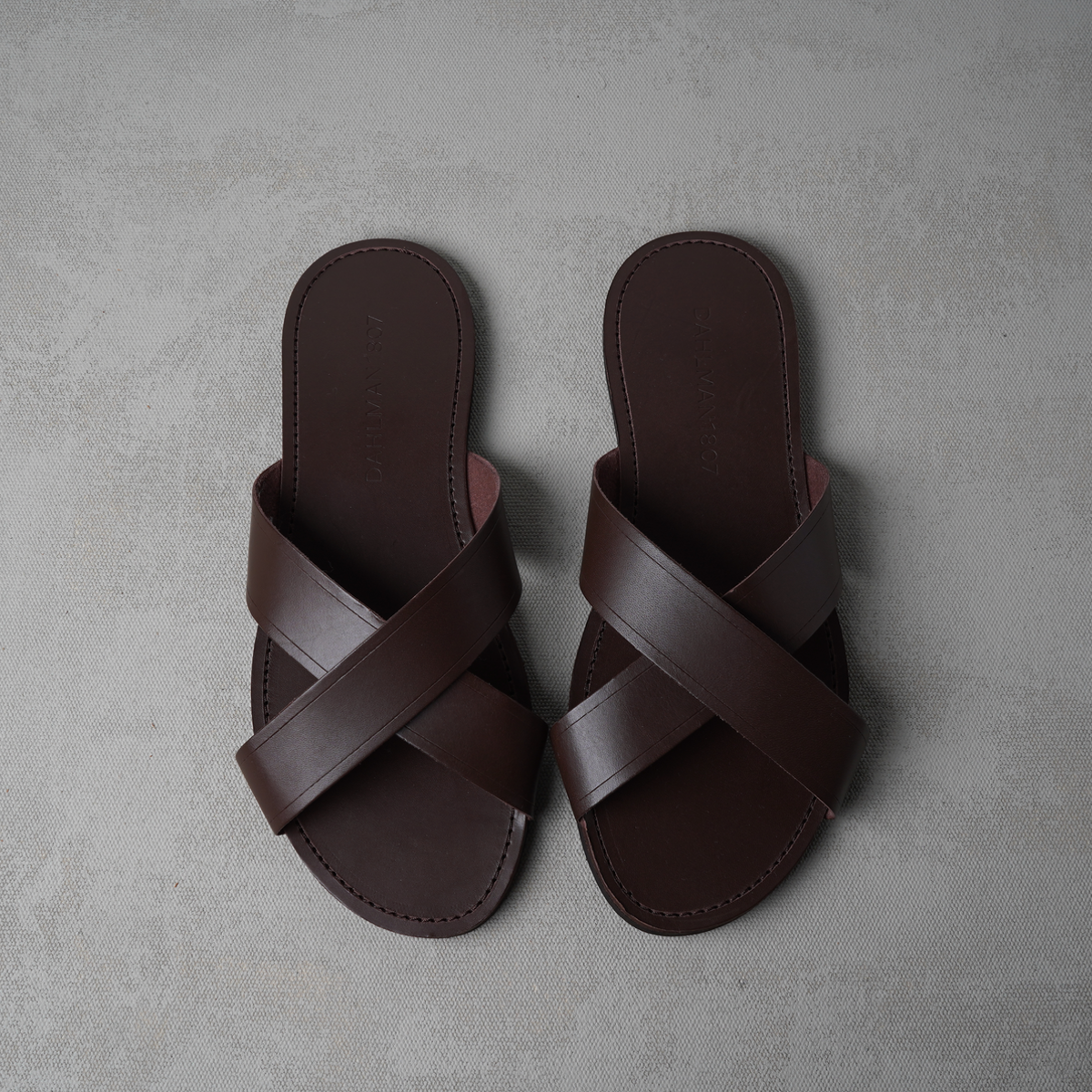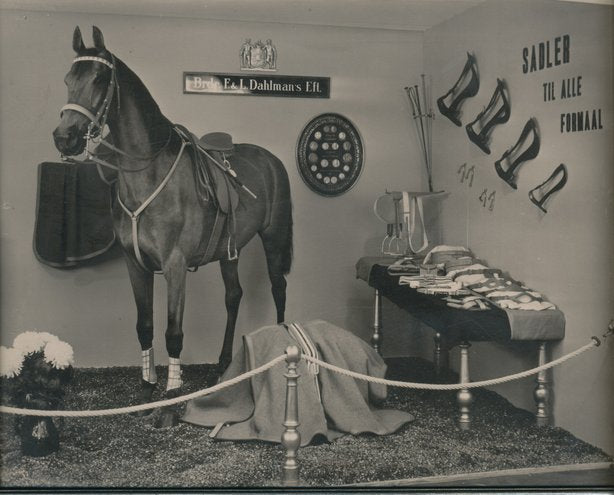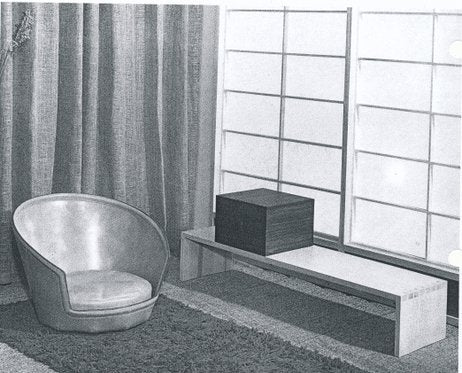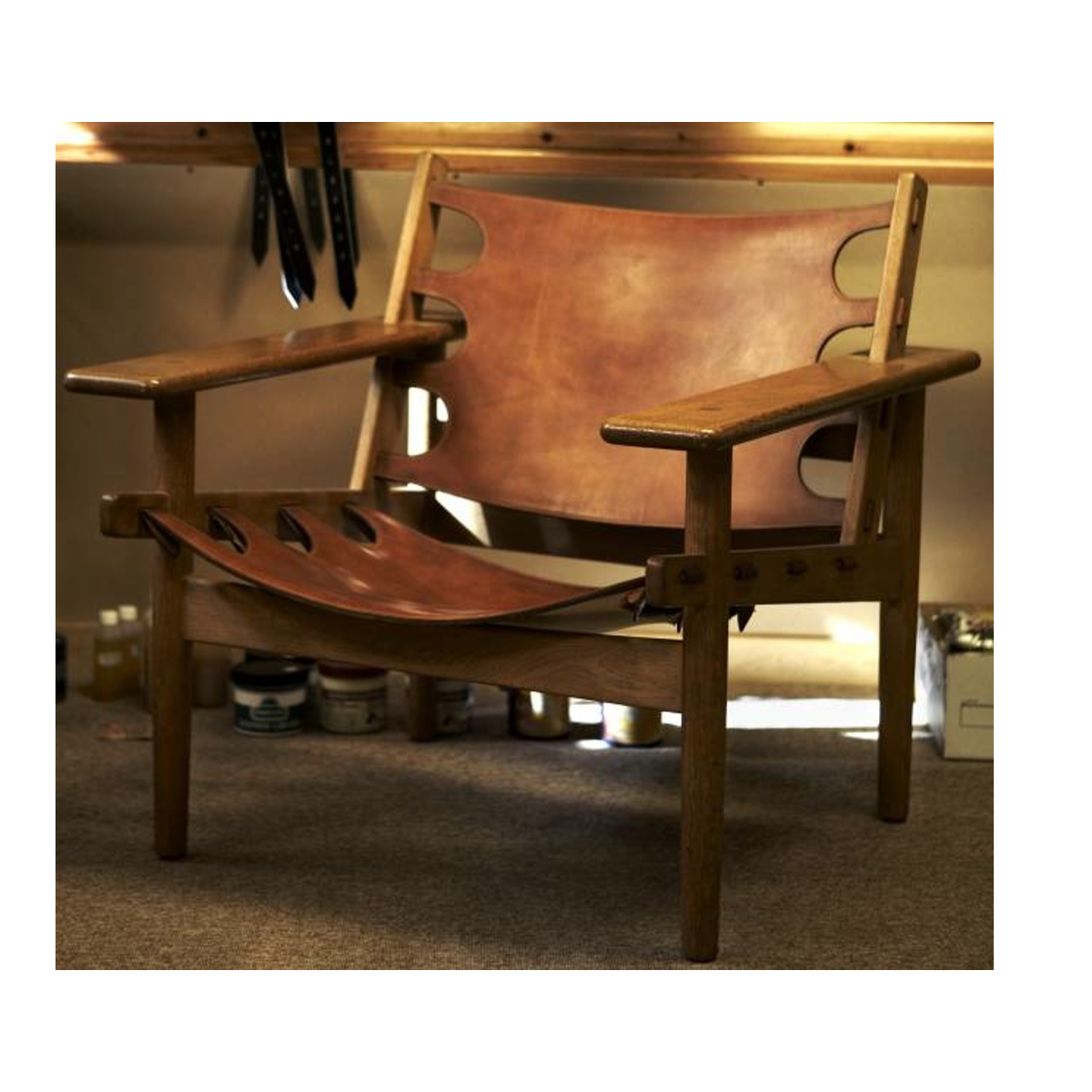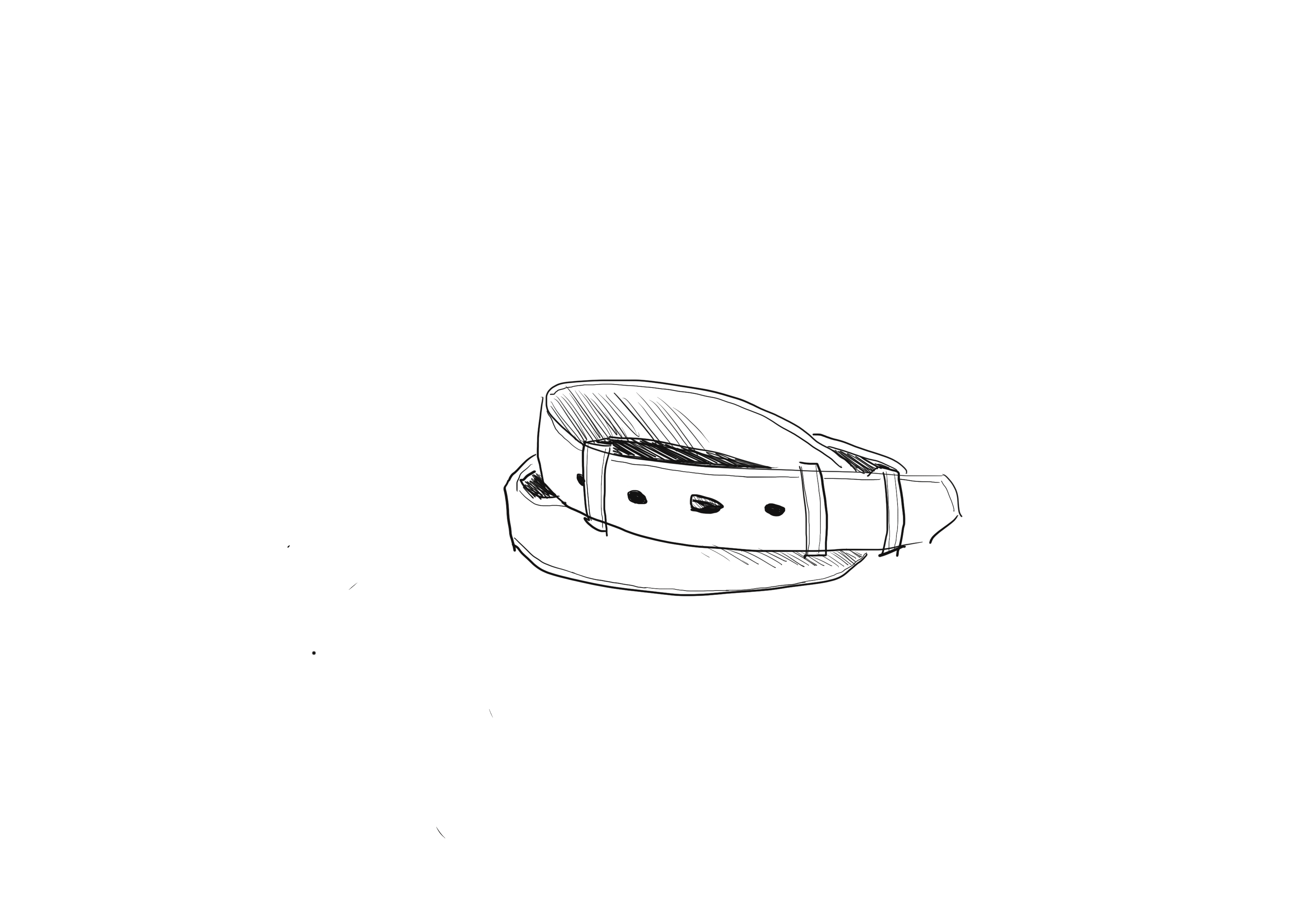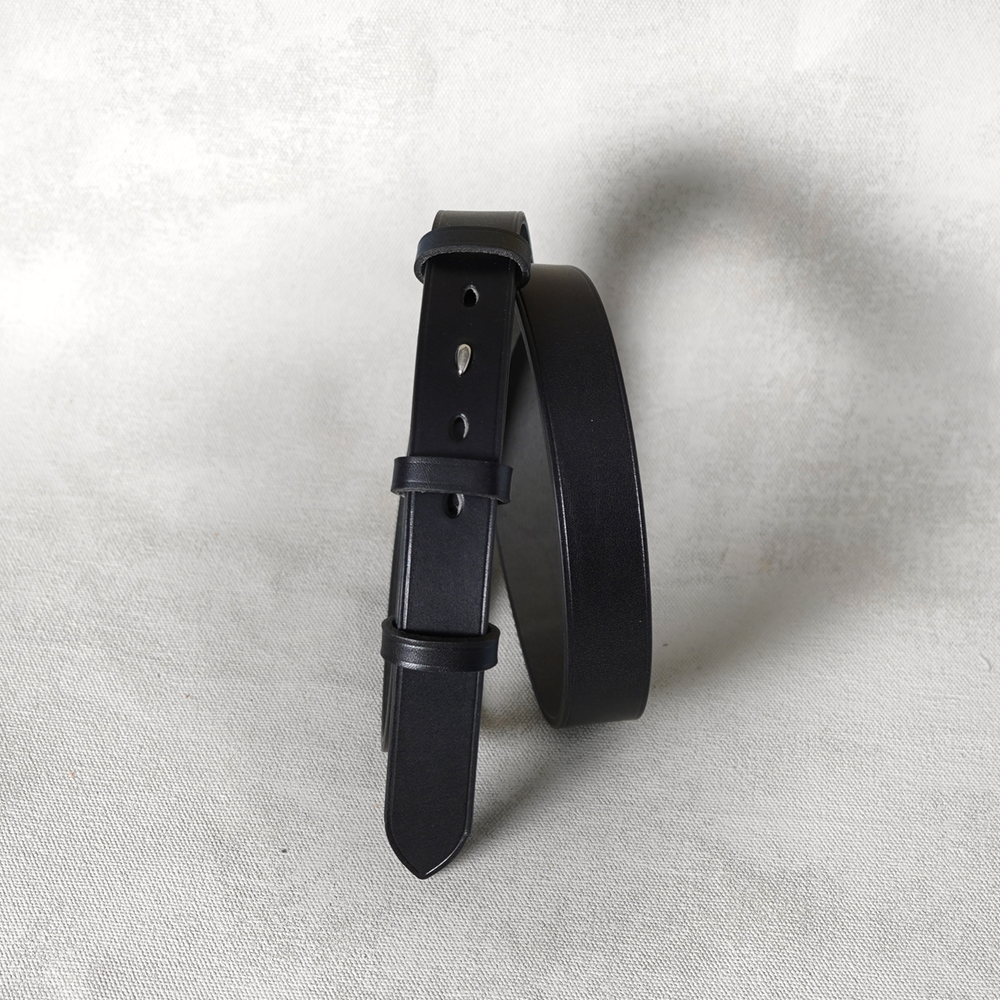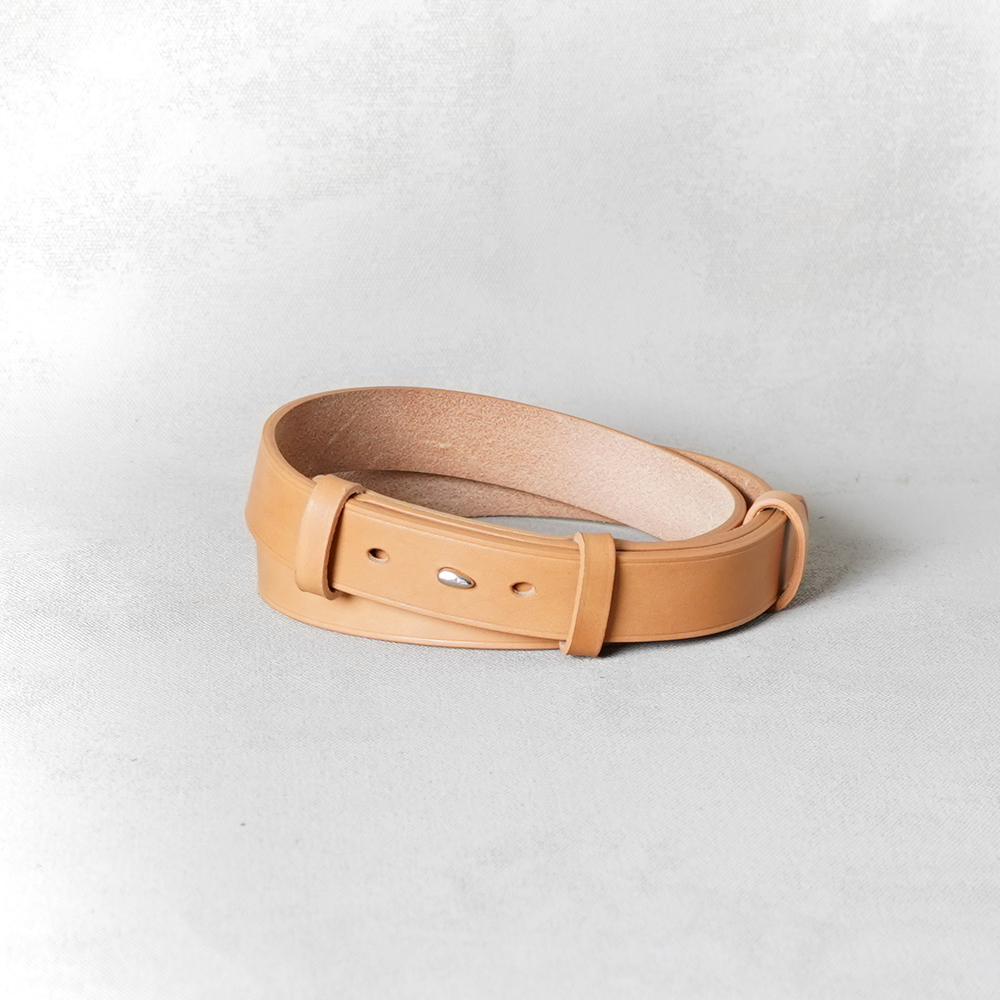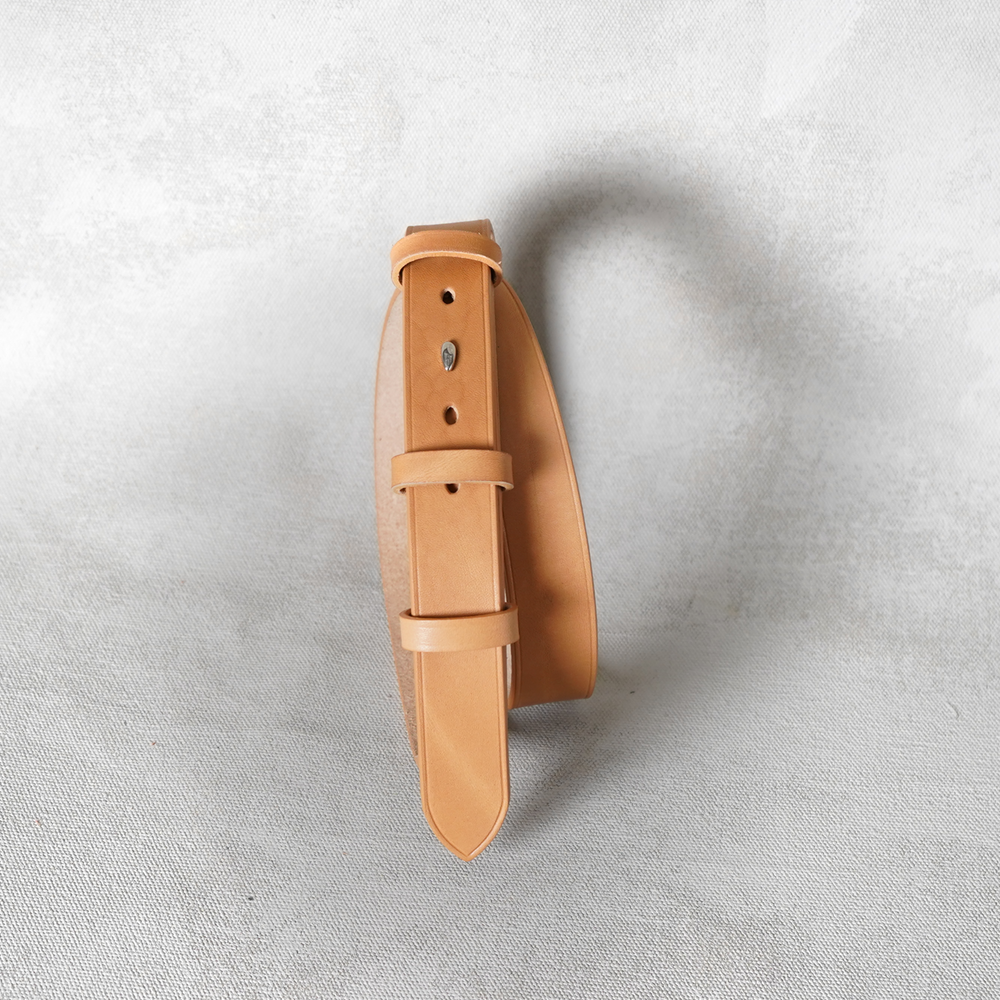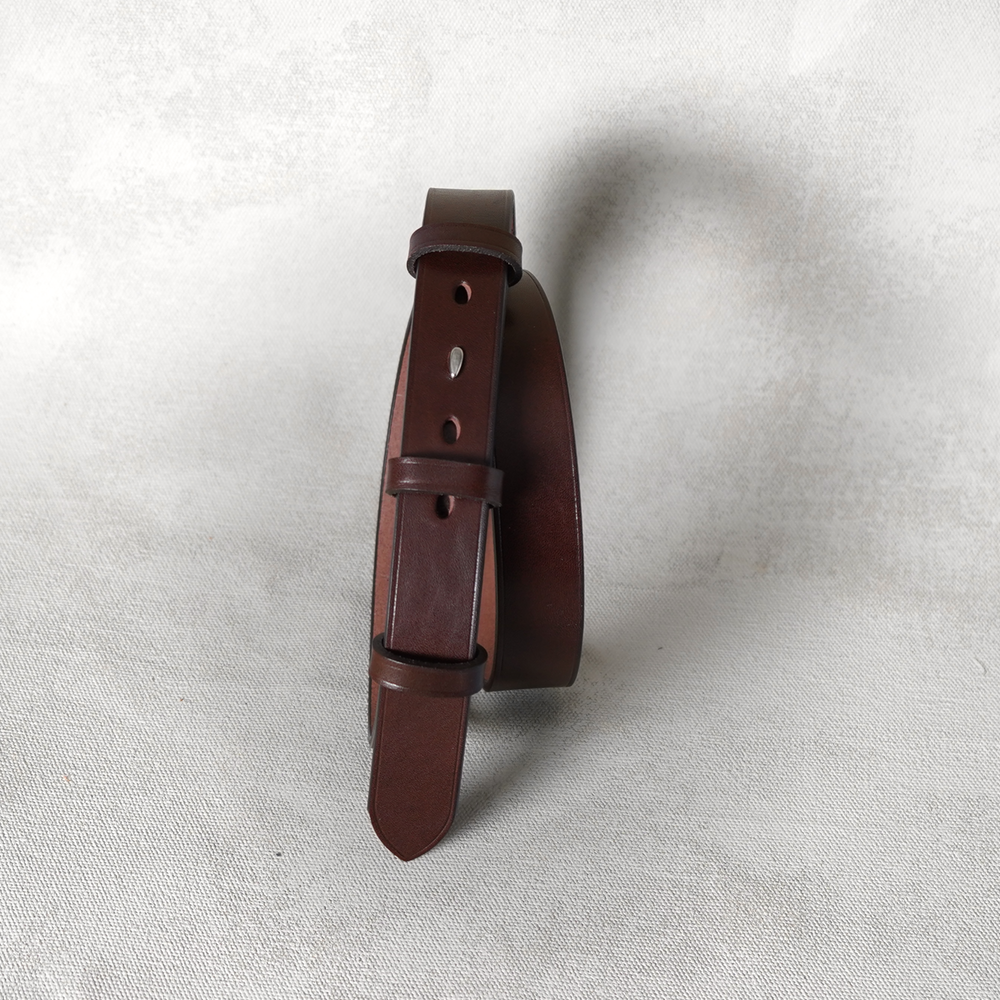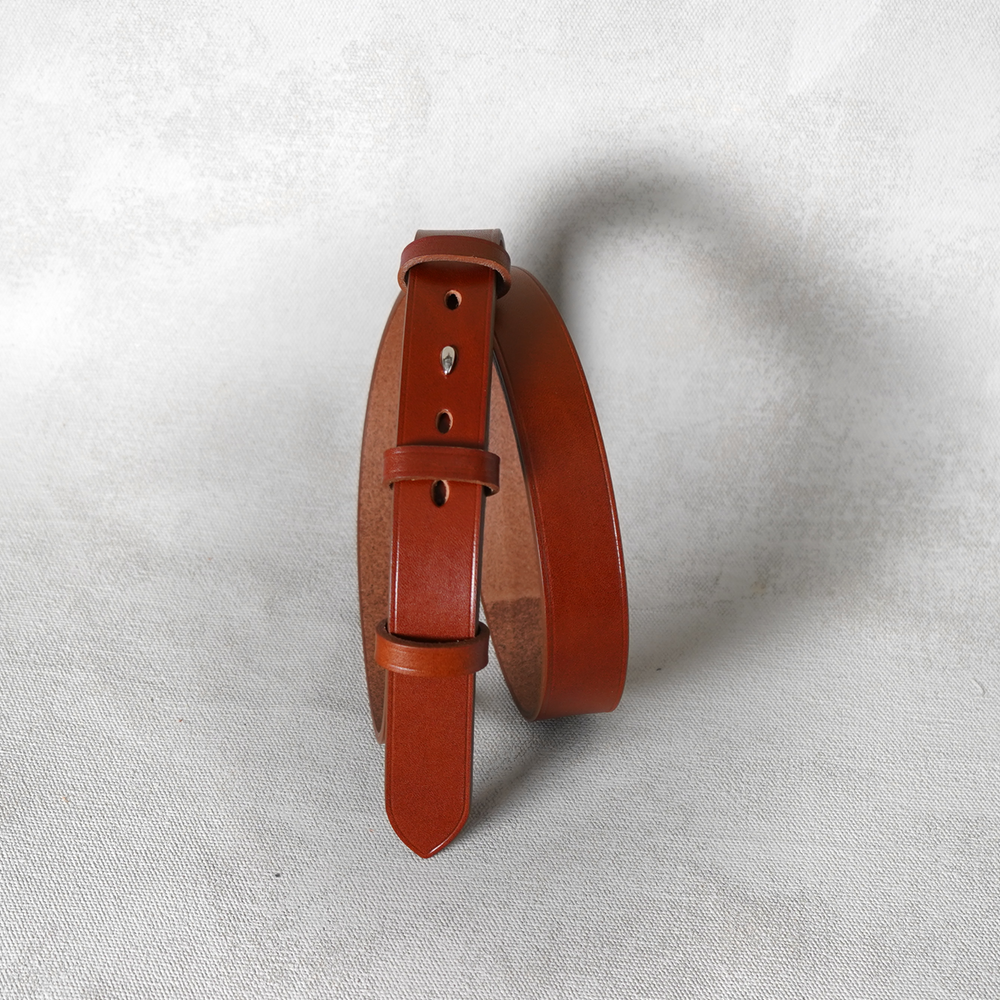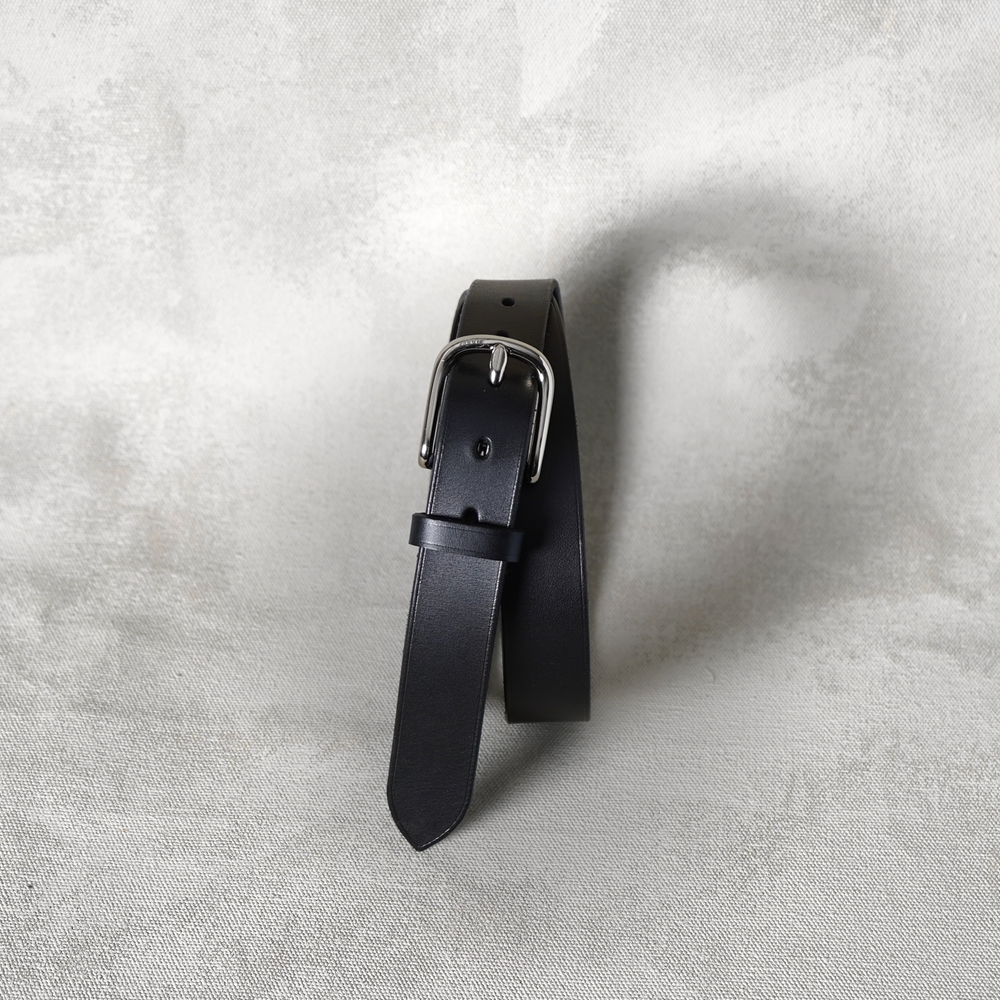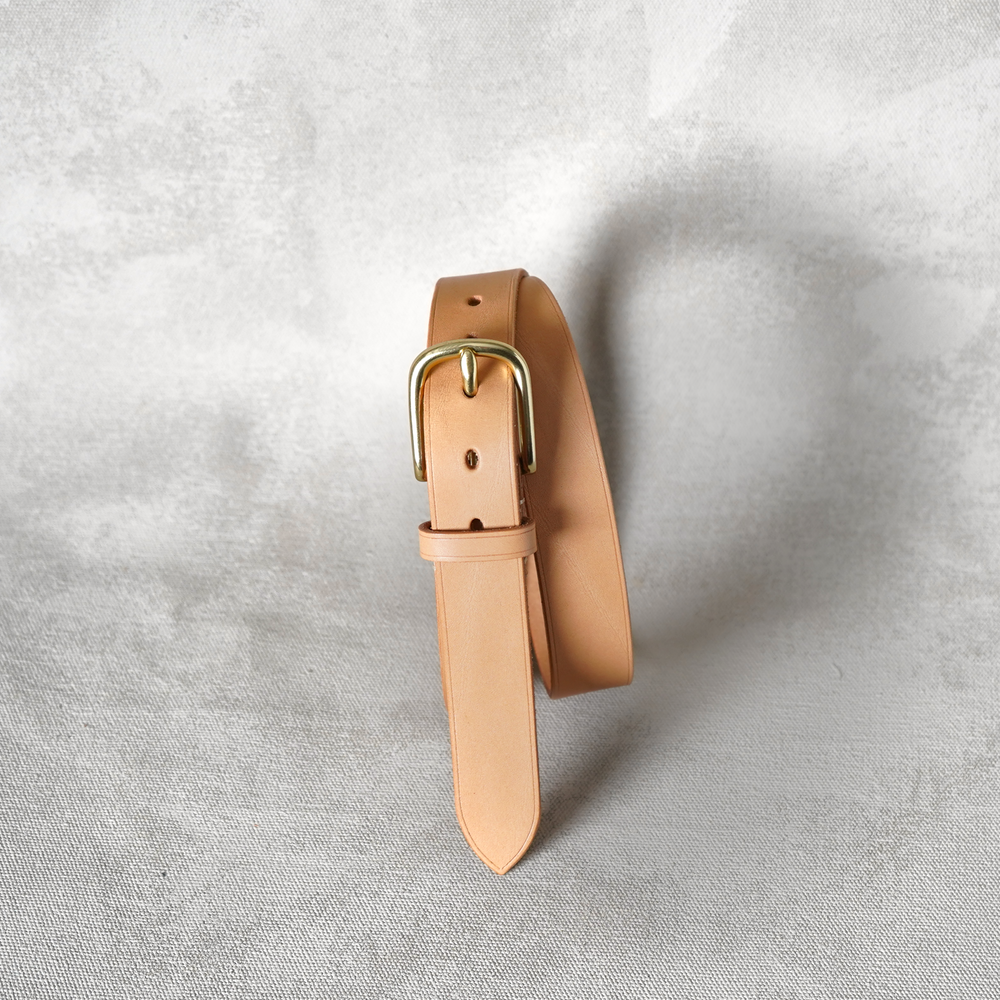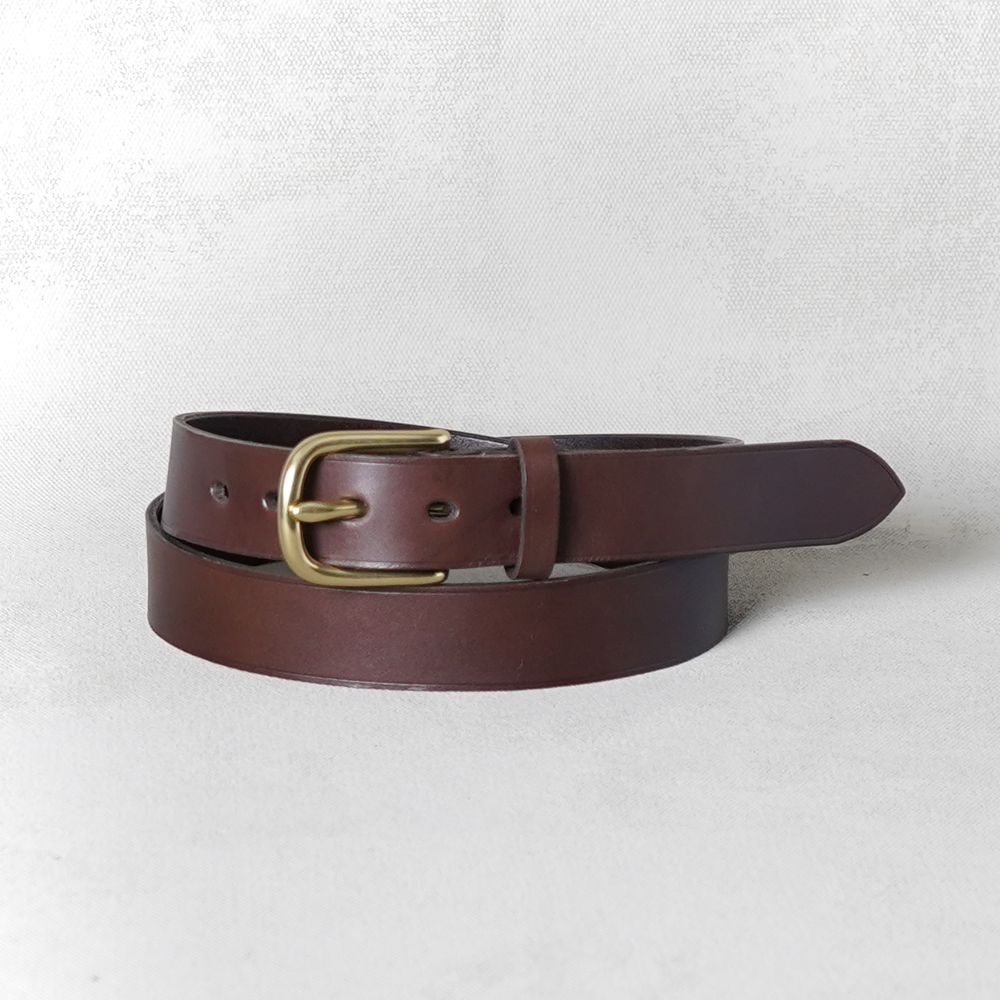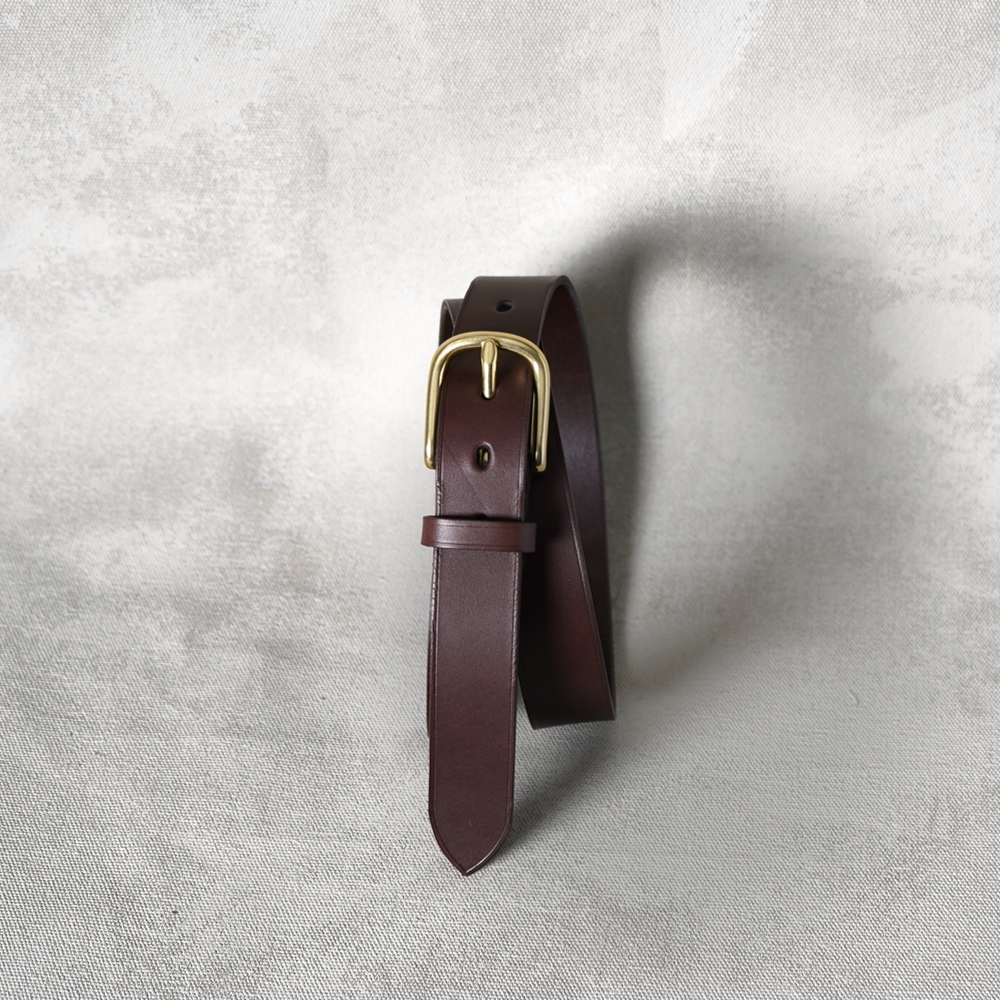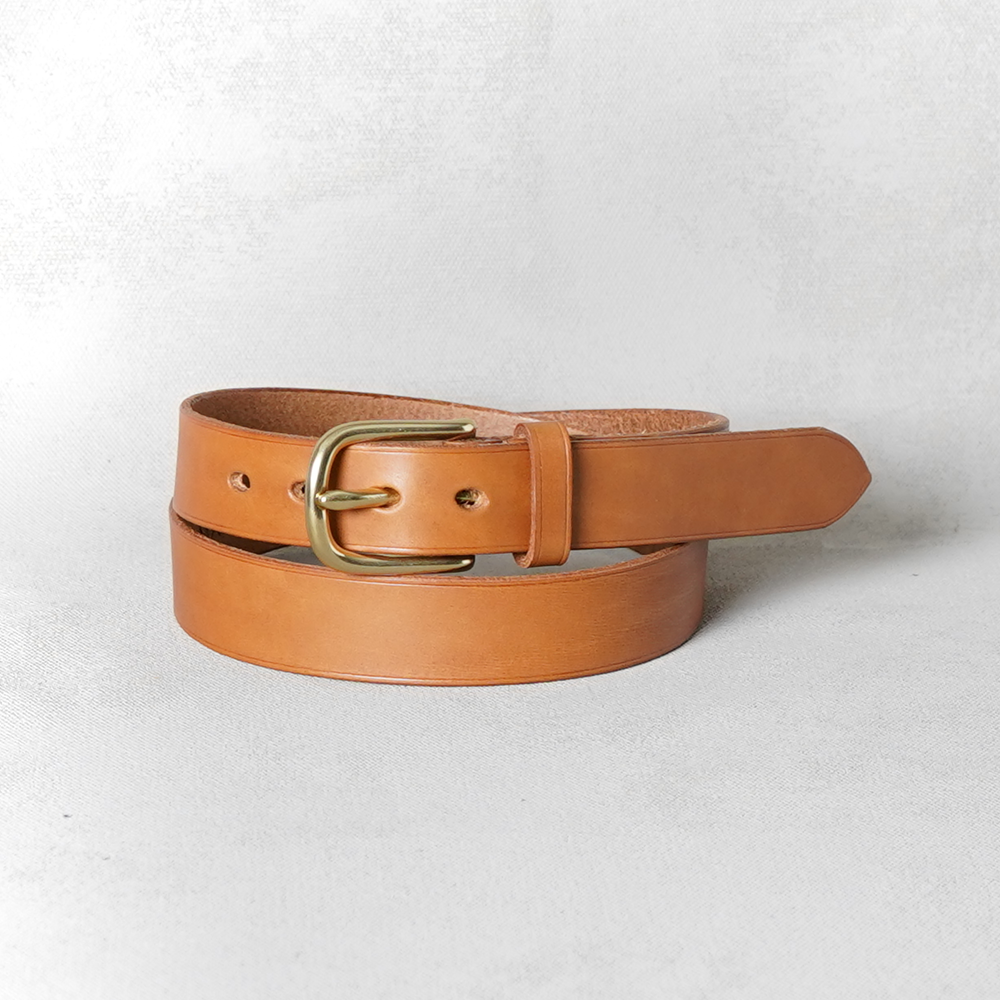DAHLMAN1807S HUS
FORTUNSTRÆDE 6 ER IKKE BARE EN BYGNING - DET ER ET EFTERMÆLE
JEPPE DENCKER, KREATIV DIREKTØR - DAHLMAN1807
"VED AT KOMBINERE VORES KLASSISKE HÅNDVÆRK MED MESTERLIG DESIGN STRÆBER VI EFTER AT SKABE TIDSLØSE OG VEDVARENDE LÆDERVARER, SOM OVERGÅR SÆSONER. FOR AT SIKRE AT VORES PRODUKTER VARER I GENERATIONER BLIVER HVER ENESTE MATERIALE, SOM VI BRUGER, HÅNDPLUKKET - FRA DET FINESTE VEGETABILSK GARVET LÆDER TIL DET SOLIDE MESSING OG EKSTRA HOLDBARE TRÅD. VED AT GØRE DETTE SIKRE VI, AT HVER ENESTE TING, SOM DU KØBER, STÅR SIN PRØVE OVER TID."
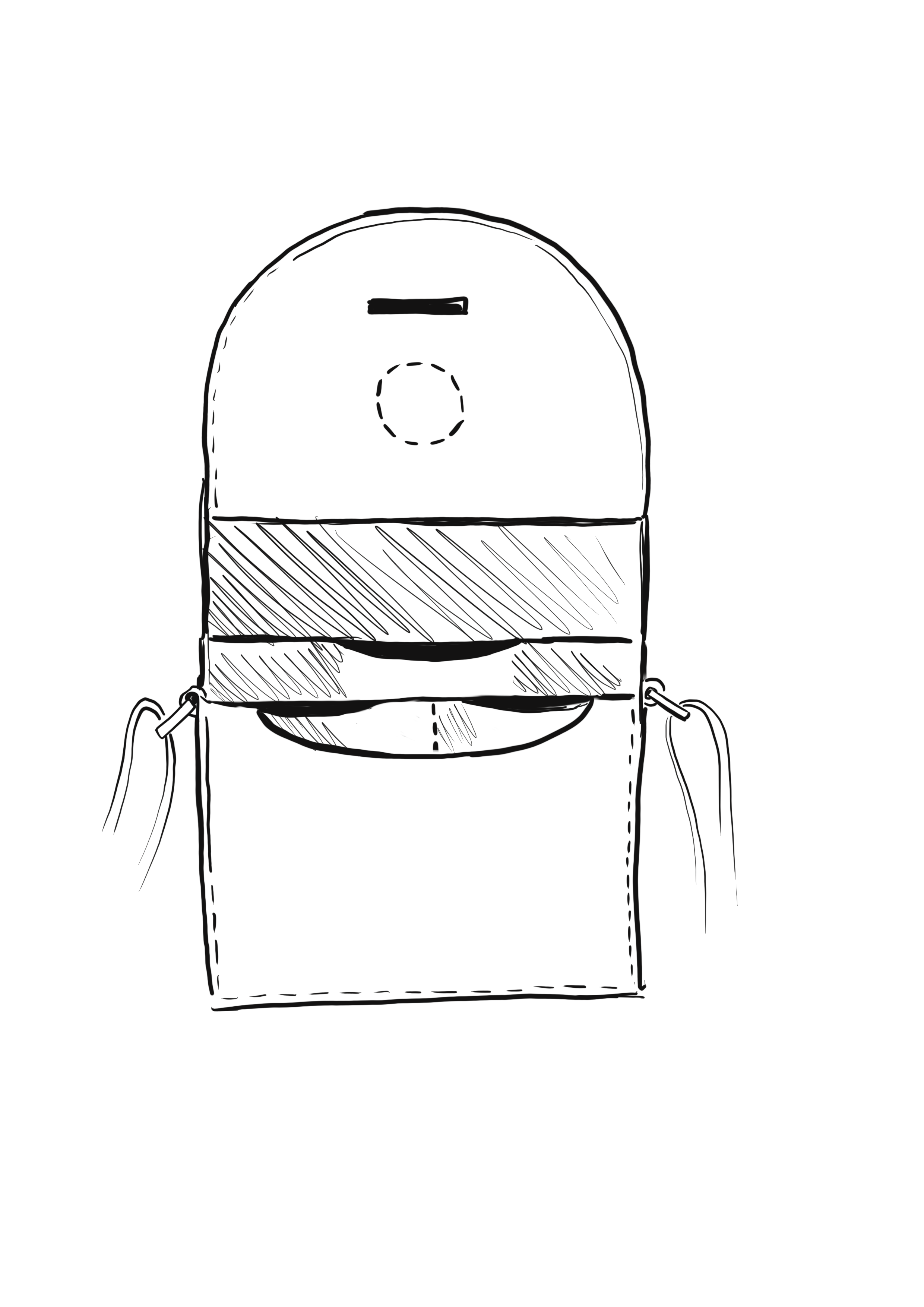
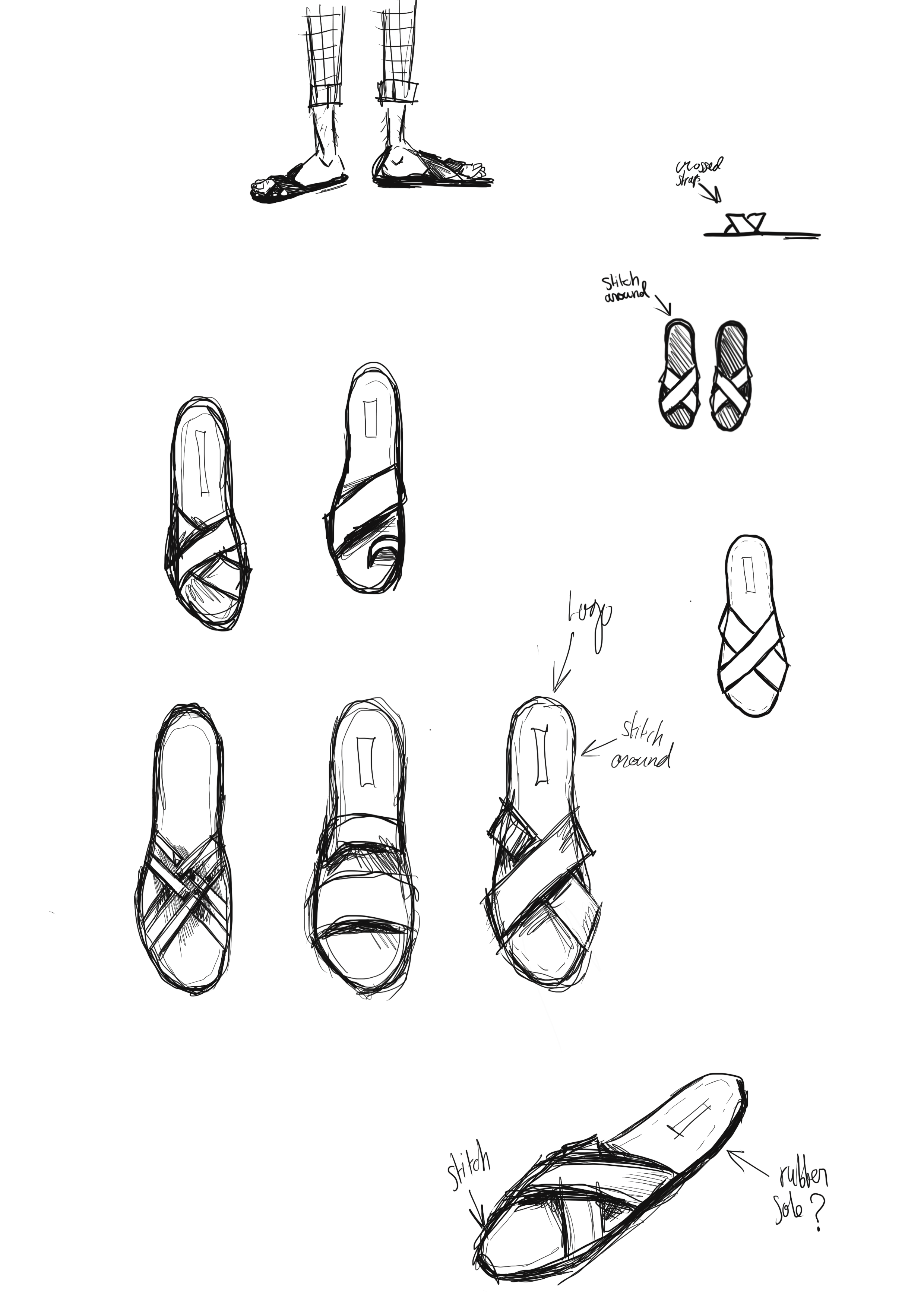
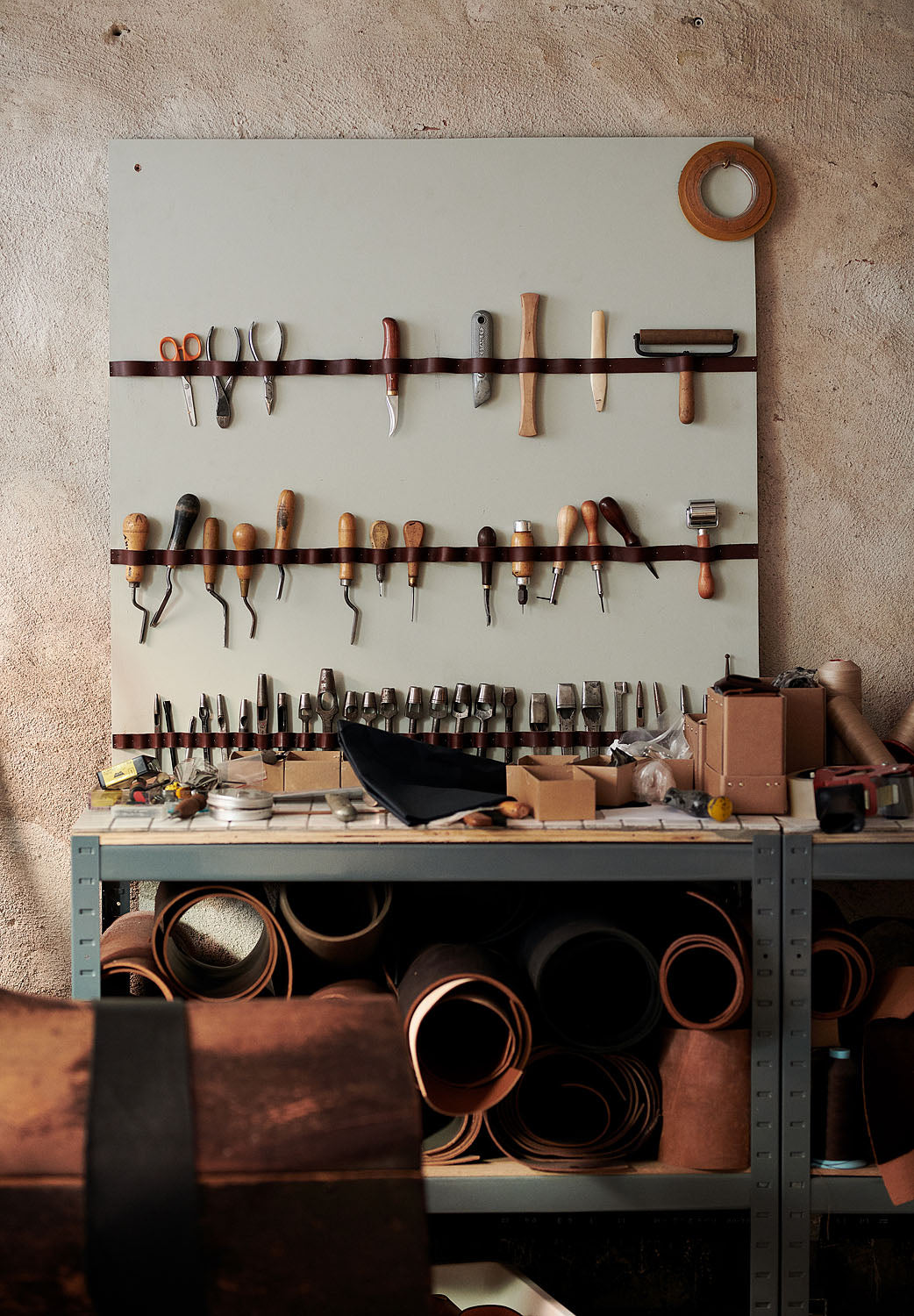
The Dahlman story
1807
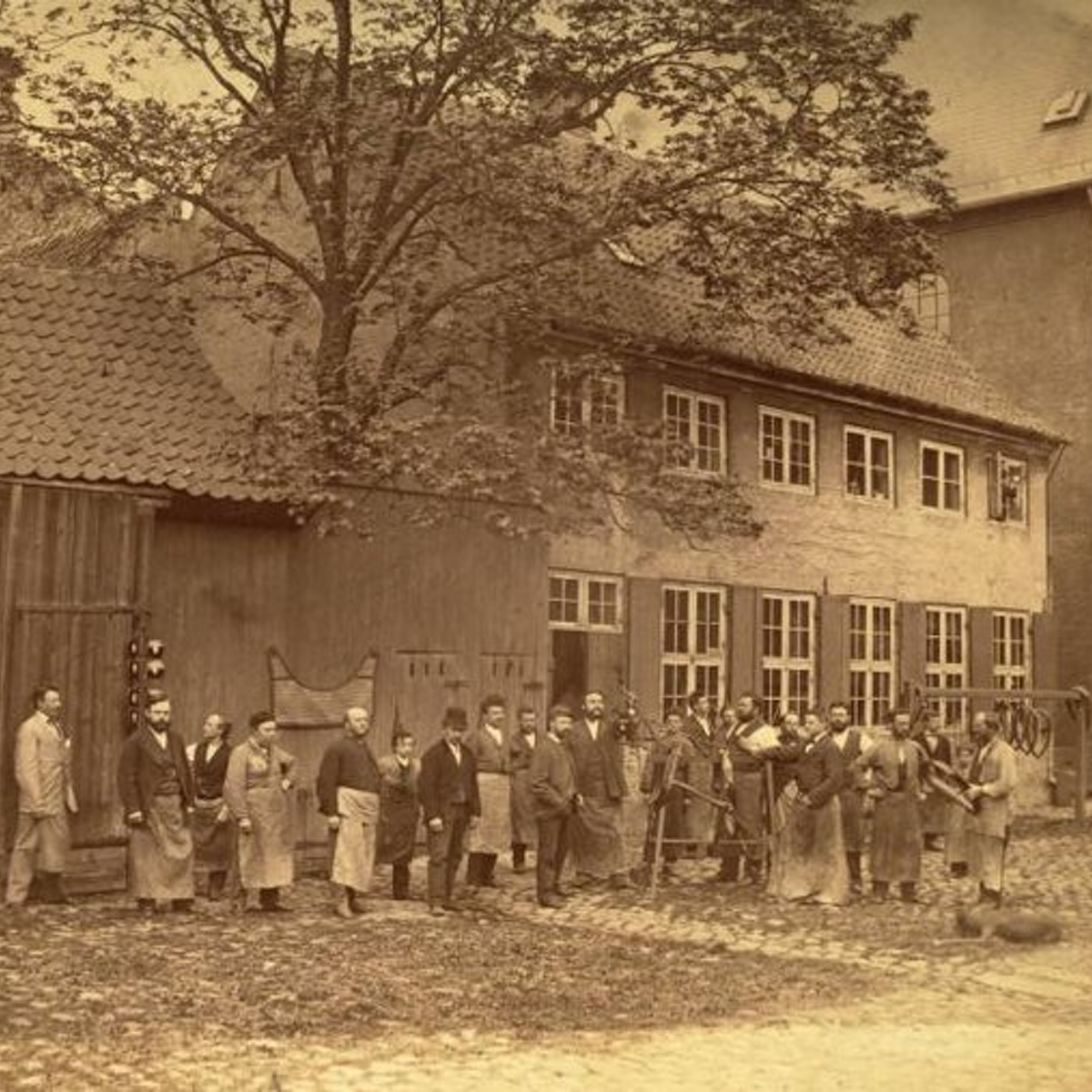
The beginning
At the beginning of September 1807 Copenhagen came under a heavy attack from the British navy. The Danish capital was left in ruins, buildings were levelled with the ground, and thousands of people were killed. Among them the master saddler with the the Royal Stables. This opened up for the 28-year-old Wilhelm Ludvig Dahlman, who was acknowledged to be a both skillful and dynamic saddler, and who had been deeply fascinated by the saddlers’ remarkable craft all of his life. His interest in saddlery had grown before the defeat and he had developed his special talent for the craft in his employment as a saddler in the Royal Horse Guards. On the 14. of September, only nine days after the bombardment of Copenhagen, Wilhelm’s dream came true. He was asked to take over the vacant post in the Royal Stables, and at the same time he founded his own saddlery. The Dahlman Company had seen the light of day. Wilhelm and his newly created company moved into the workshop in the Saddlers Court behind Christianborg Riding Ground which became Dahlman’s home for the next 99 years.
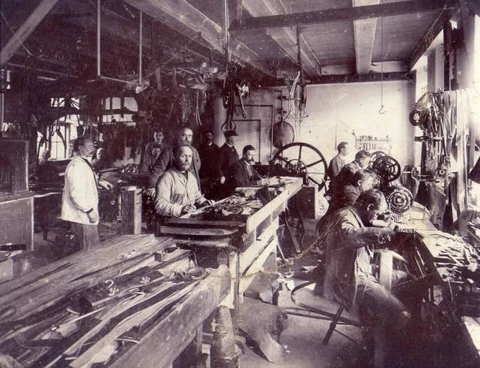
1825
ROYAL COURT SADDLER
Wilhelm impressed with his ability to design and sew top quality leather saddles. The Danish royal family became so enthusiastic about Wilhelm’s work that he received the highest royal recognition of his services when King Frederic VI promoted him Royal Court Saddler in 1825. The title does not exist today, but was considered to be more than purveyor to the Court where you were expected to deliver free goods and services to the Court in return for the royal recognition of your company.
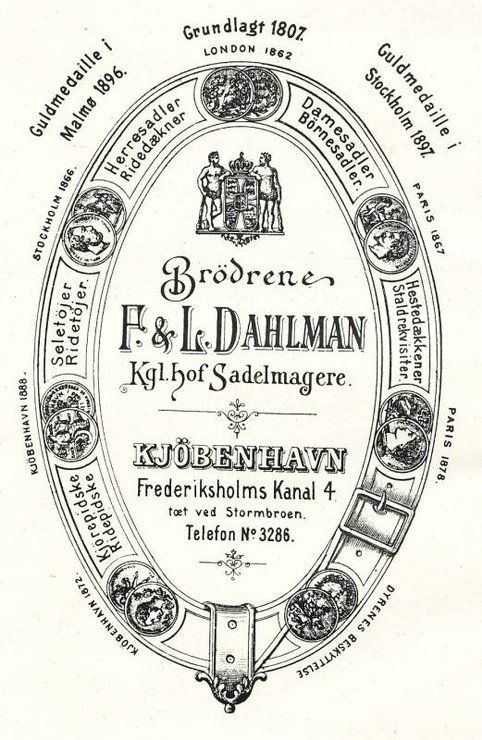

1930

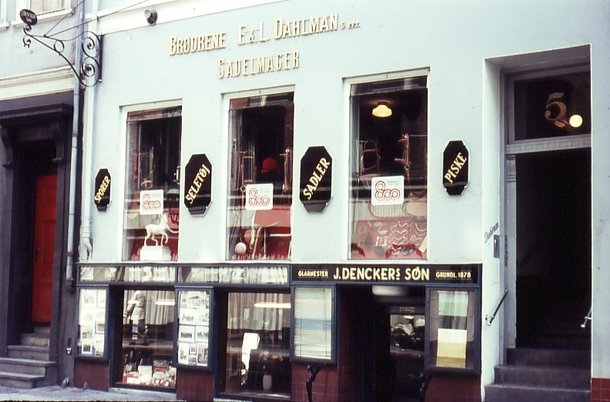
THE TRANSFORMATION TO A MODERN LEATHER COMPANY
In 1906 when a heating system was to be installed in the Saddlers Court, Dahlman had to move to new surroundings in number 4 Frederiksholms Canal after 99 years in the workshop behind Christiansborg Riding Ground. Furthermore when Wilhelm’s great-grandchild, Kai Halkier, took over Dahlman in 1928 he immediately set to look for a new situation for Dahlman which could fulfill his vision of making Dahlman into a modern leather house. Two years later Kai succeeded in his search when Dahlman moved to Fortunstræde - a charming, peaceful, cobbled street in the centre of Copenhagen, where Dalhman resides today. The new surroundings gave Kai an opportunity to arrange and organize a proper shop to display saddles, which the customers could take a view of before they decided what appealed to them. The relocation to number 5 Fortunstræde was the first big move in Kai’s modernization of Dahlman.
A YOUNG VISIONARY
The development of Dahlman continued at a rapid pace under Kai’s management thanks to his employment of young, enterprising Willy Hendriksen in 1932. He was trained as a saddler under his father, Henry, who was a foreman with Dahlman. Willy’s unique talent for design and particulars was obvious right from the start, and he received the highest distinction from the craft guild for his final piece of work finishing his apprenticeship, an English saddle with knee pads. His interest in leatherwork went further than riding equipment, which so far had been a core activity in the Dahlman Company the previous 131 years. Strongly supported by Kai, Willy designed the company’s first leather belts and sandals followed by various bags, among these The Architect Bag and The Dahlman belt, that are still being handmade in the Dahlman workshop today.

COLLABORATIONS WITH DANISH ARCHITECTS
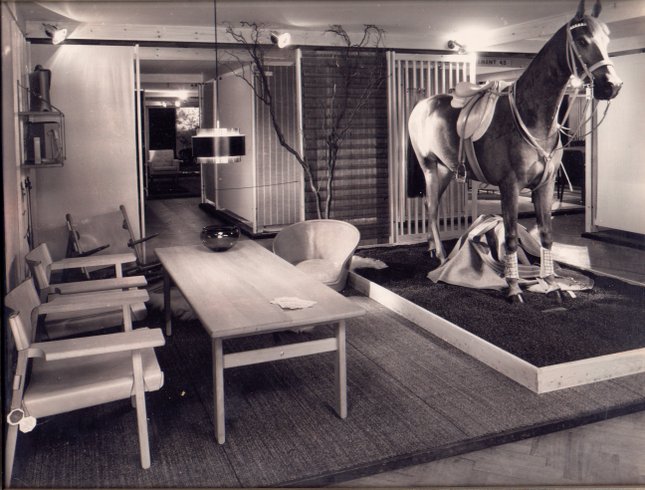
For years to come a number of the greatest Danish architects became aware of Dahlman and Willy’s sense of design and refined leather work. In the course of time Arne Jacobsen and Hans J. Wegner visited number 5 Fortunstræde regularly, and in 1958 Børge Mogensen began to co-operate with Willy, who sewed the seat and back of the prototype of Børge Mogensen’s famous hunting chair. When Kai and his daughter, Lizzi, died in 1957 and 1959 respectively, Willy took over Dahlman and expanded his co-operation with several of the most famous architects and designers from the golden era of Danish Design. Under Willy’s management lifestyle products would become increasingly important in the future Dahlman Company.
Architect’s belt, By William Hendriksen
a Dahlman classic Originally designed in the 1940s
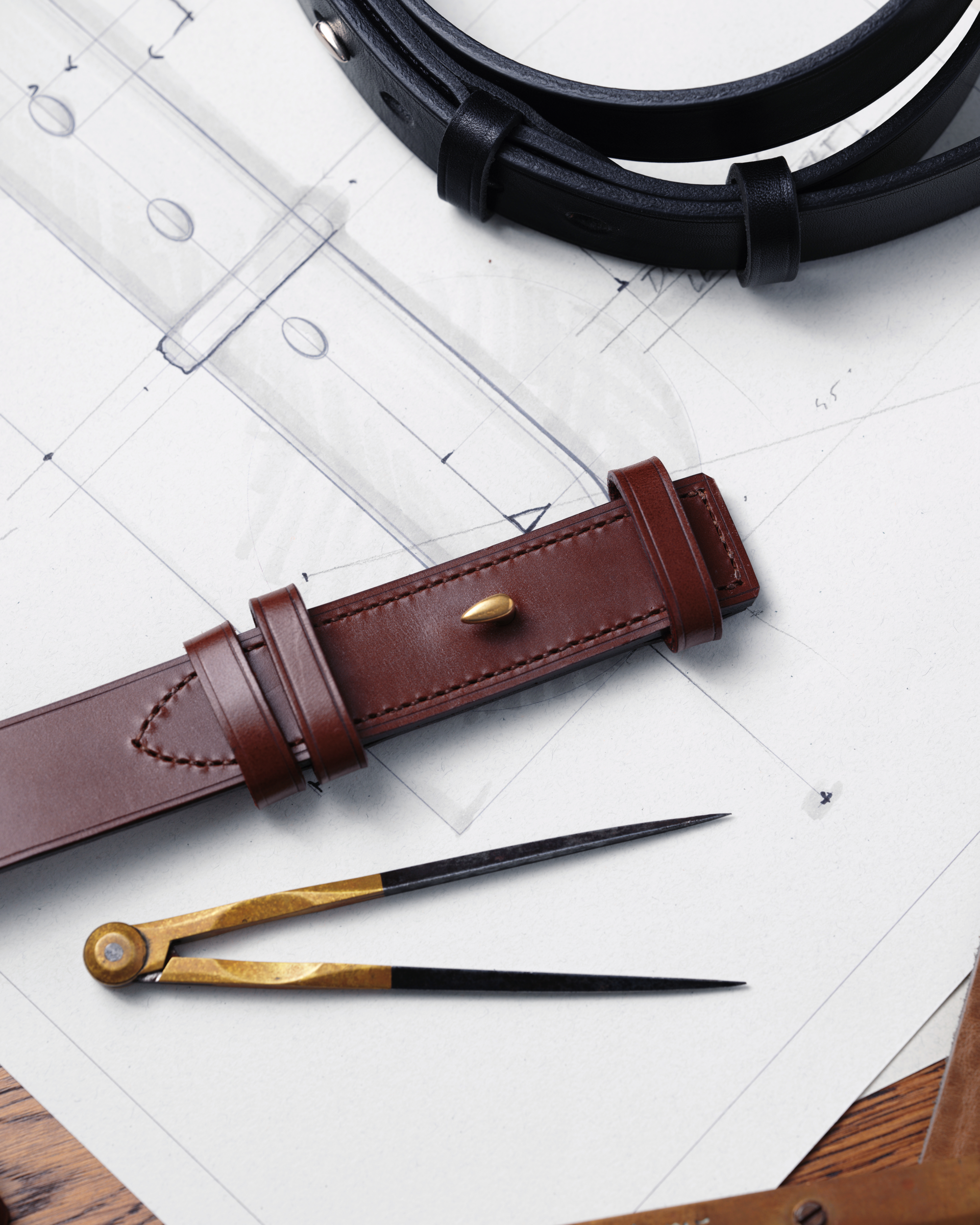
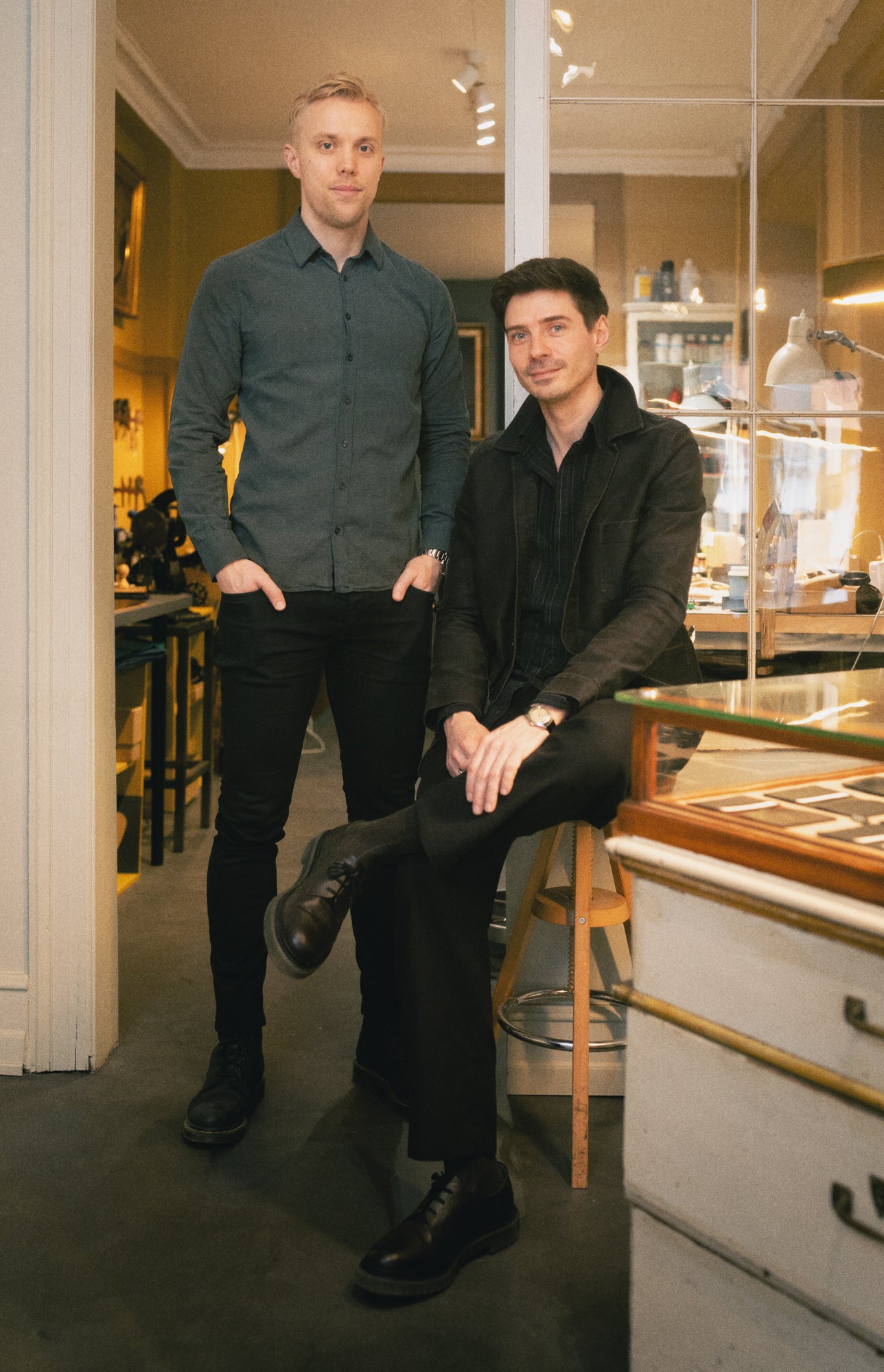
A NEW ERA
Today we are just as committed to create beautiful handcrafted products as our predecessors, celebrating old and proud traditions in a contemporary context.
211 years after Wilhelm Ludwig Dahlman founded the company, it has now transformed into a modern leather house, focusing on leather goods with an uncompromising approach to craftsmanship and materials.
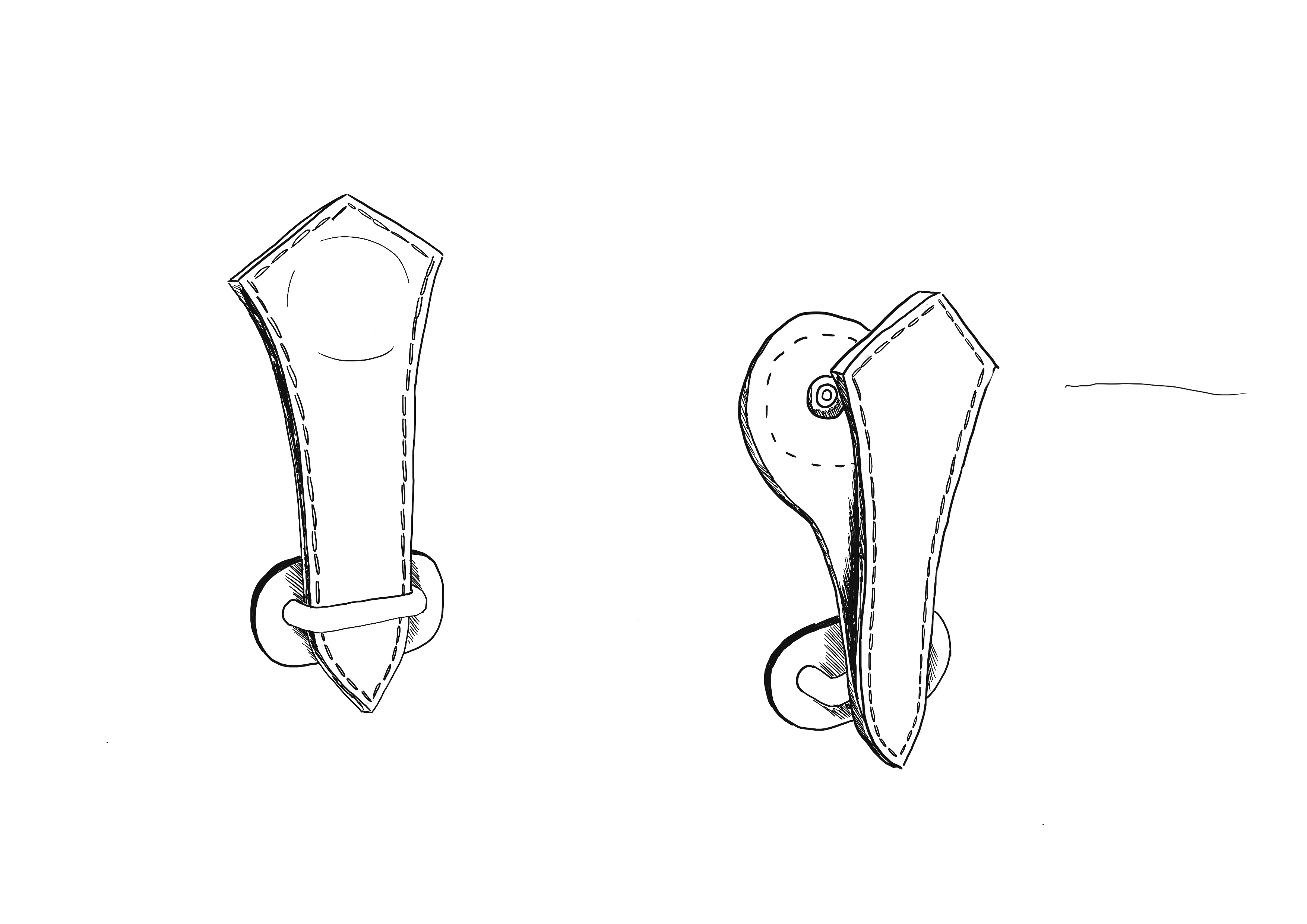
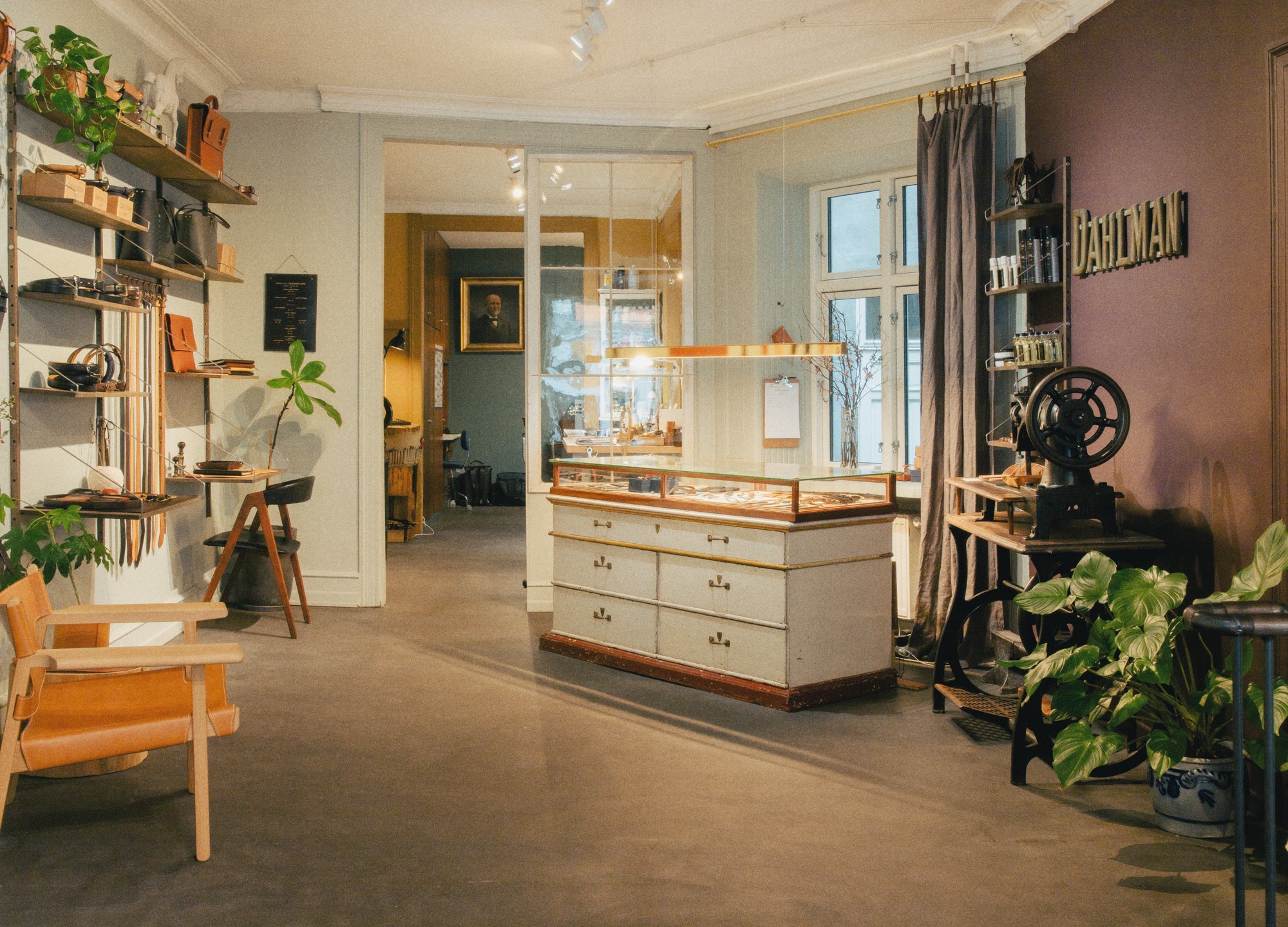
VIDERFØRELSE AF ARVEN
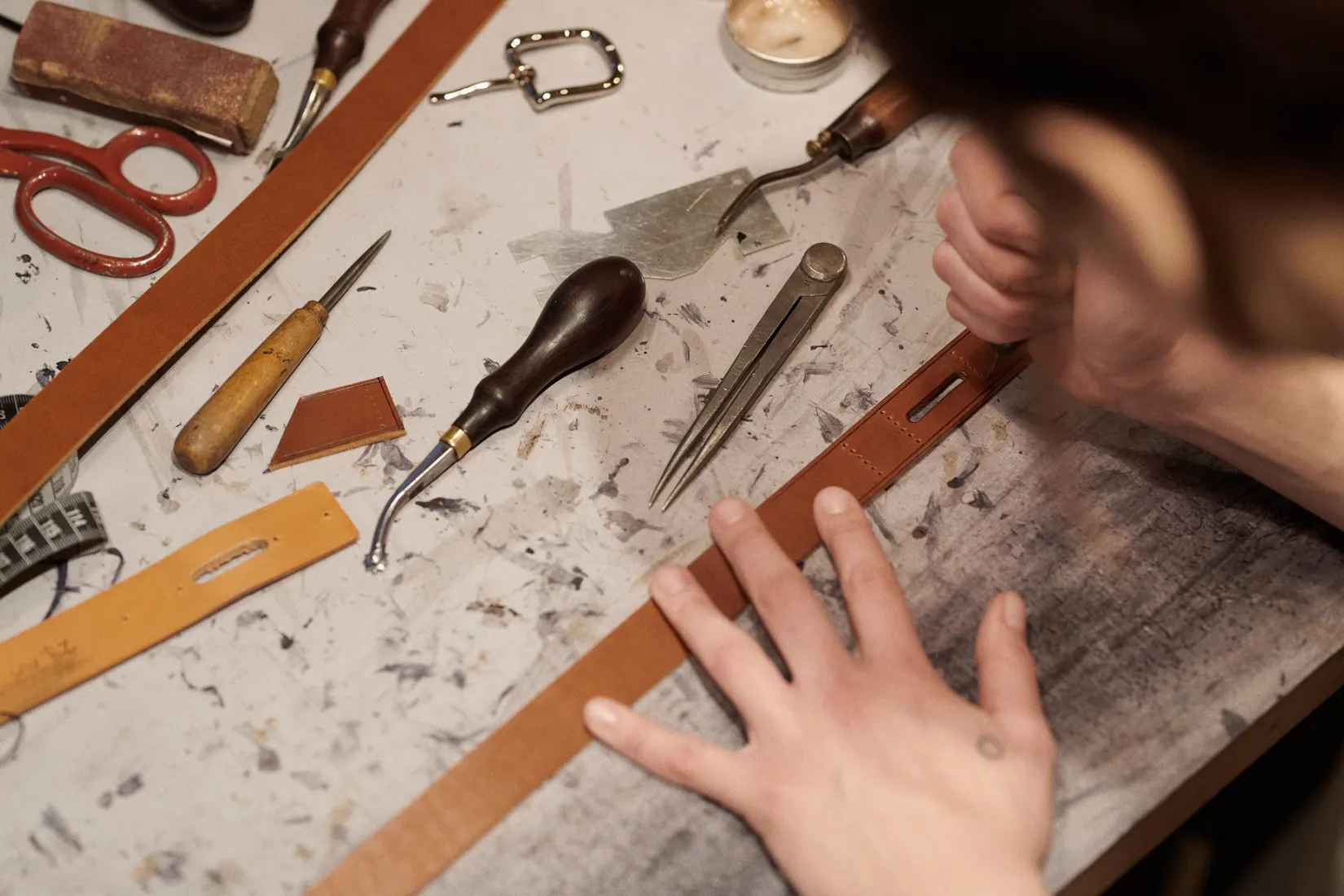
Featured collection
Læderbælter
Arkitektbæltet, Sort
Salgspriskr 1,450.00
TEEEST
Salgspriskr 1,450.00
Arkitektbæltet, Mørkebrun
Salgspriskr 1,450.00
Arkitektbæltet, Kastanje
Salgspriskr 1,450.00
Selespænde, Fullgrain læderbælte, Sort
Salgspriskr 1,250.00
Selespænde, Fullgrain læderbælte, Tan
Salgspriskr 1,250.00
Selespænde, Fullgrain læderbælte, Espresso
Salgspriskr 1,250.00
Selespænde, Fullgrain læderbælte, Cognac
Salgspriskr 1,250.00
-
Fortunstræde 5
-
Our history
-
1807
-
1825
-
1862
-
1930
-
1942
-
1958
-
2017
-
-
Bringing on the legacy


